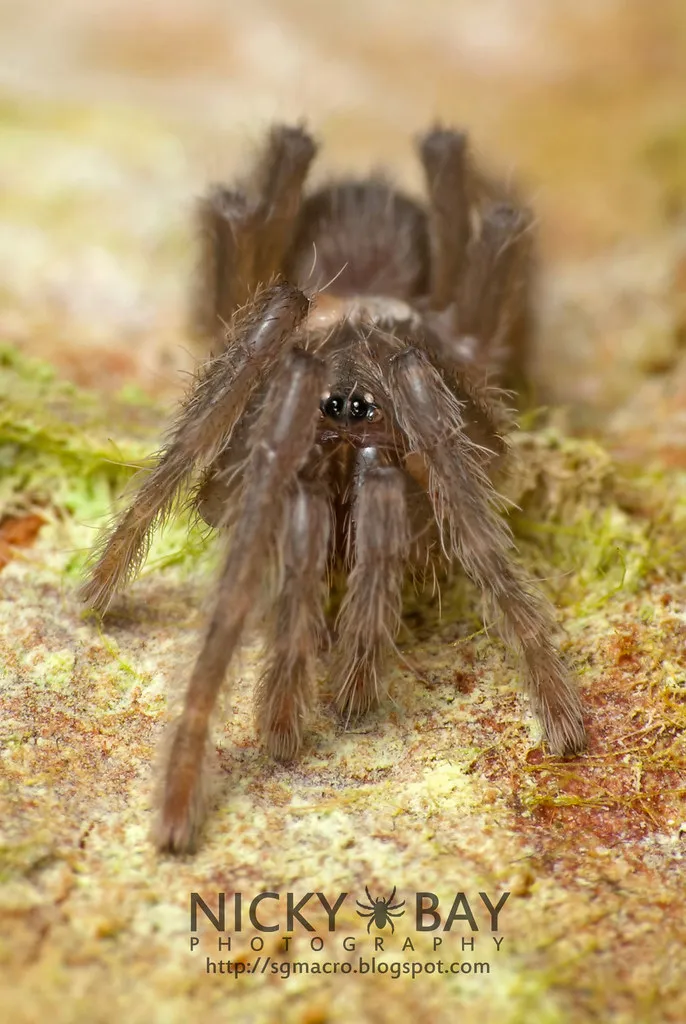Top 5 Signs of Tarantula Mite Infestation
Tarantula mite infestations are a common problem that can affect tarantula health. These tiny parasites feed on tarantula hemolymph and can cause significant stress, discomfort, and even serious health issues if left untreated. Recognizing the early signs of a mite infestation is crucial for taking prompt action and ensuring the well-being of your pet tarantula. This guide outlines the top 5 signs of a tarantula mite infestation, providing insights to help you identify and address the problem effectively. Being able to identify the infestation early on can prevent many long term health problems and ensure your pet lives a long and happy life. This is essential information for any tarantula owner, whether you’re a beginner or an experienced keeper.
Sign 1 Unexplained Behavior Changes
One of the earliest indicators of a tarantula mite infestation is often a change in your tarantula’s behavior. Observe your tarantula’s usual routine and habits. A sudden loss of appetite, lethargy, or a change in activity levels could be a sign of an infestation. A normally active tarantula may become withdrawn and spend more time hiding, while a typically calm tarantula might become restless or aggressive. These behavioral shifts are often the first clues that something is wrong and require immediate investigation. Be mindful of the changes in your pet’s behavior and make sure you’re paying attention to details.
Tarantula Mite Infestation and Feeding
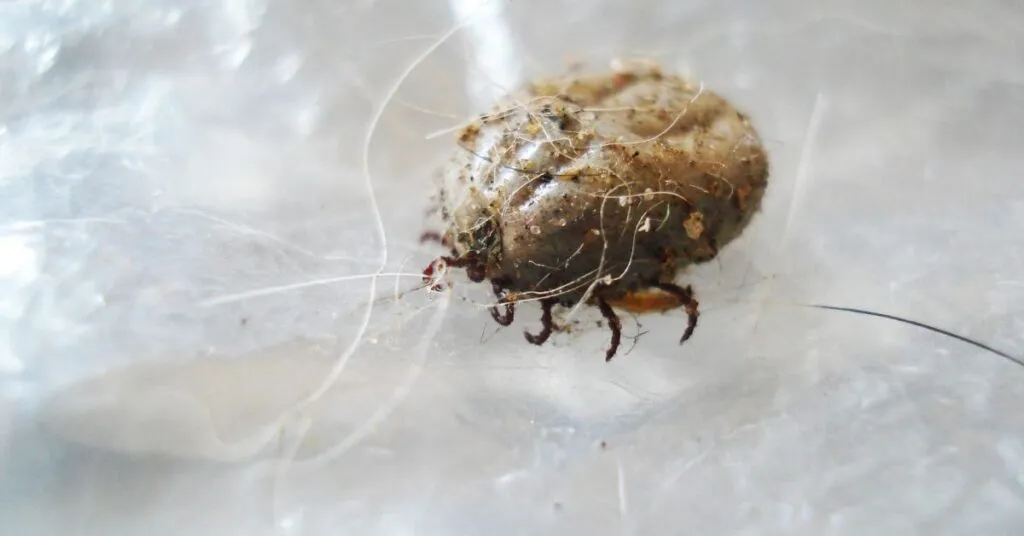
Mite infestations can significantly impact a tarantula’s feeding habits. Infested tarantulas may lose their appetite or refuse to eat altogether. This is because mites can cause irritation and discomfort, making it difficult for the tarantula to focus on feeding. Furthermore, the stress caused by the infestation can suppress the tarantula’s natural instincts to hunt and eat. If you notice your tarantula suddenly stops eating or shows a decreased interest in food, it’s essential to check for other signs of a mite infestation. Regular monitoring of food intake is a key component of tarantula care and will help you maintain your pet’s health.
Sign 2 Visible Mites
The most obvious sign of a tarantula mite infestation is the presence of the mites themselves. These tiny parasites are often visible to the naked eye, appearing as small, moving dots on the tarantula’s body. They typically cluster around the joints, legs, abdomen, and book lungs. While some mites are harmless, a large number of mites can indicate an infestation and should be addressed promptly. If you observe any unusual moving spots on your tarantula, especially near vulnerable areas, it’s crucial to take immediate action to identify and treat the infestation.
Identifying Mites on your Tarantula
Mites can vary in color, often appearing white, red, or brown. Use a magnifying glass to get a better view of these small pests. Carefully inspect your tarantula, paying close attention to the areas where mites commonly reside. Check around the joints, the base of the legs, and the abdomen. Mites can also sometimes be found on the fangs and around the mouthparts. Compare the appearance of the mites with pictures and descriptions available online to help determine whether you are dealing with a problematic infestation. Accurate identification is crucial for selecting the right course of treatment.
Sign 3 Excessive Grooming
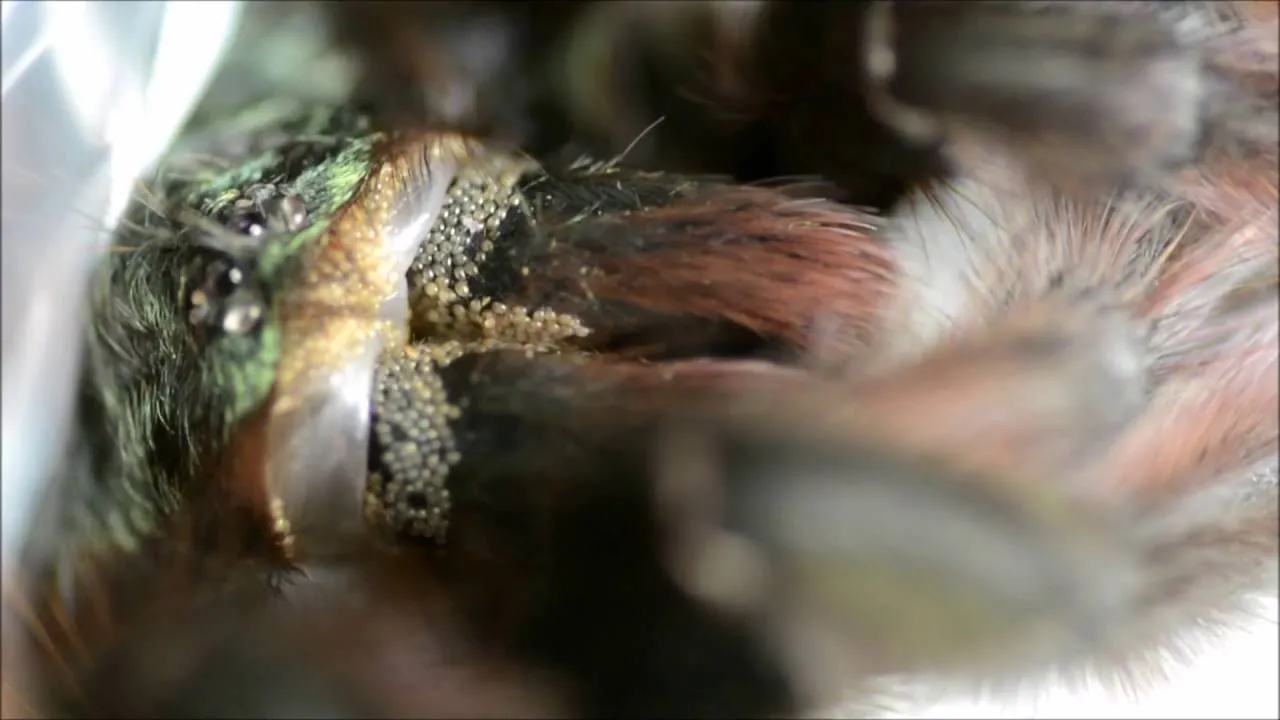
Tarantulas are naturally clean creatures, and they regularly groom themselves. However, increased grooming behavior can be a sign of a mite infestation. Your tarantula may begin to groom more frequently and for longer periods, attempting to rid itself of the irritating parasites. This may involve excessive rubbing of the legs, abdomen, or other body parts. While some grooming is normal, increased and frantic grooming is a red flag that suggests your tarantula is trying to alleviate the discomfort caused by mites. This will be a crucial indicator that something is wrong.
The Impact of Mites on Tarantula’s Health
Mites can cause significant stress and discomfort, leading to a decline in your tarantula’s overall health. The constant irritation can make it difficult for the tarantula to eat, molt, or behave normally. In severe cases, a prolonged infestation can weaken the tarantula’s immune system, making it more susceptible to other infections and diseases. Additionally, mites feed on the tarantula’s hemolymph, which can further compromise its health. Monitoring your tarantula closely for any signs of distress or illness is critical for early intervention and treatment.
Sign 4 Color Changes
Another sign of a tarantula mite infestation can be changes in the tarantula’s color. The presence of mites can cause the exoskeleton to appear duller or less vibrant than usual. This is due to the mites feeding on the hemolymph, which can alter the appearance of the tarantula’s body. In extreme cases, you might see areas of discoloration or unusual spots on the tarantula. These changes, along with other symptoms, indicate that there may be a serious problem that needs to be addressed immediately to provide your pet with the necessary care.
How Mites Affect Tarantula’s Appearance
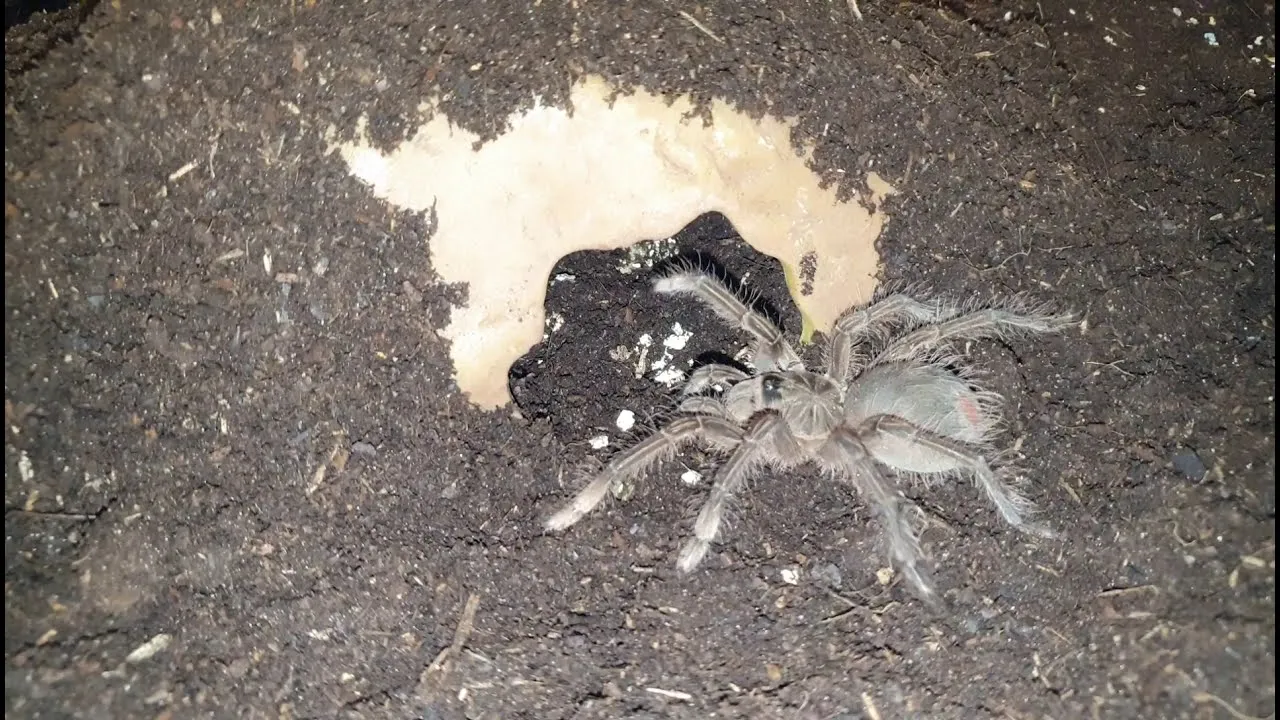
Mites can cause the exoskeleton to lose its natural sheen and become less vibrant. The mites’ feeding activity disrupts the normal coloration processes, leading to a dull or faded appearance. This is particularly noticeable in brightly colored tarantula species. You might notice the colors of the legs, carapace, or abdomen becoming less intense. The presence of mites can also cause unusual spots or patches on the tarantula’s body. Any significant changes in appearance, especially when combined with other symptoms, should prompt a thorough examination and treatment.
Sign 5 Molting Problems
Mite infestations can interfere with the molting process. A tarantula’s ability to molt successfully is crucial for its growth and health. Mites can cause the exoskeleton to become damaged or weakened, making it more difficult for the tarantula to shed its old skin. Infested tarantulas may experience incomplete molts, where parts of the old exoskeleton remain attached, or they may struggle to break free of the old skin. Molting problems can be a serious issue, potentially leading to stress, injury, or even death.
Tarantula Mite Infestation and Molting Difficulties
Mites can attach themselves to the tarantula’s exoskeleton, interfering with the molting process. They can also weaken the exoskeleton, making it difficult for the tarantula to shed its old skin. Incomplete molts can occur when the tarantula is unable to fully remove its old skin. If you notice any molting difficulties, such as the tarantula struggling to shed its skin or remaining stuck in its old exoskeleton for an extended period, it is crucial to investigate for a mite infestation. Providing a humid environment can sometimes help the process, but often, treatment for the mites is also needed.
Prevention and Treatment
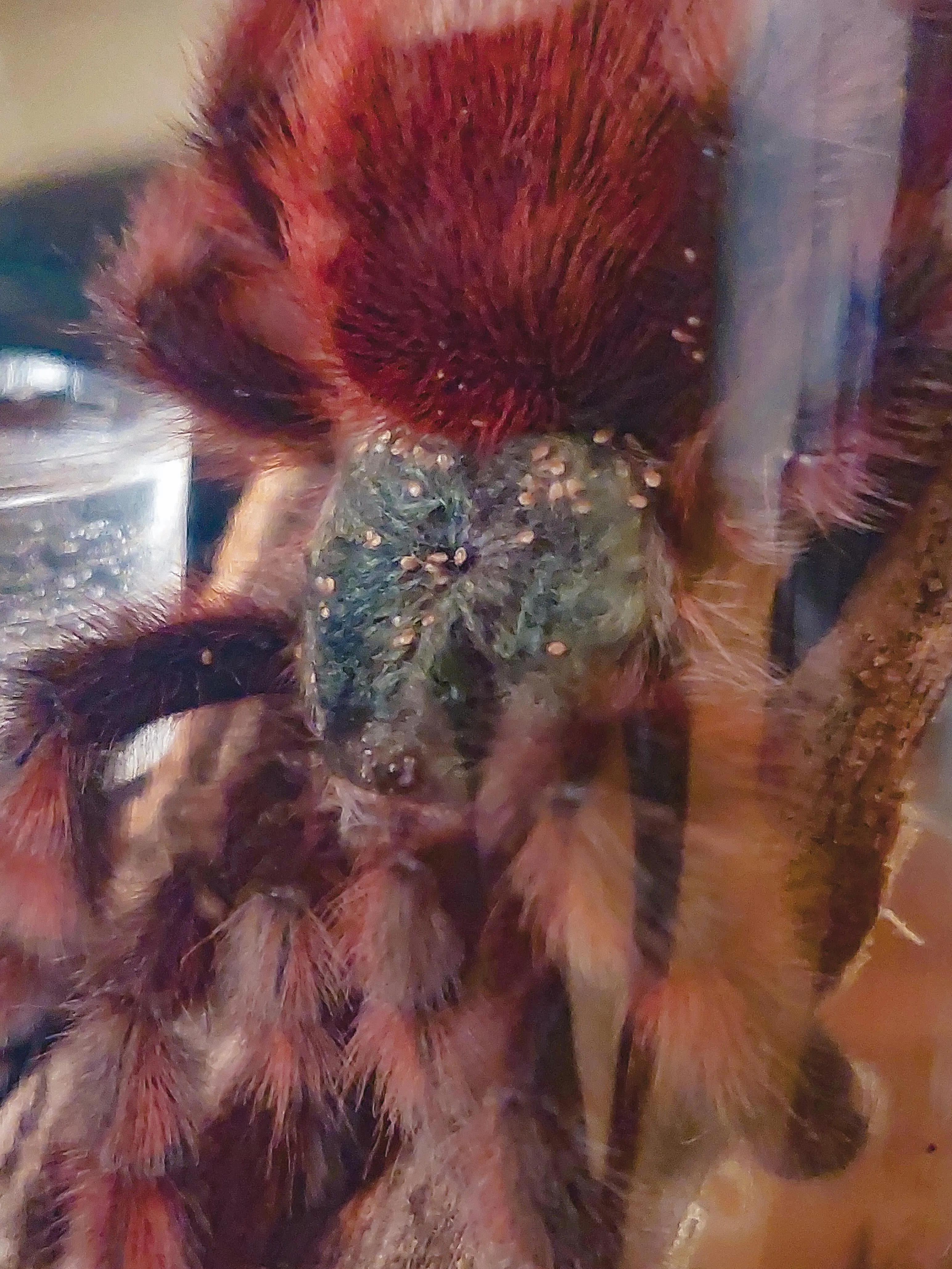
While addressing the existing mite infestation is crucial, taking preventative measures is just as important. Implementing proper hygiene practices and quarantining new tarantulas can significantly reduce the risk of future infestations. Regular monitoring of your tarantula for any signs of mites is also essential. By knowing the top 5 signs of a tarantula mite infestation, you can react quickly and save your pet from any lasting health issues. This can help ensure that your tarantula lives a long and healthy life.
Quarantine New Tarantulas
When bringing a new tarantula into your collection, quarantine is an essential step. Isolate the new tarantula in a separate enclosure for at least 30-60 days. This allows you to monitor the tarantula for any signs of illness or infestation before introducing it to your existing collection. During this time, carefully inspect the tarantula regularly for mites, as well as other potential issues. By quarantining new arrivals, you can prevent the spread of mites to your other tarantulas, which will reduce the risk of a tarantula mite infestation.
Proper Habitat Hygiene
Maintaining a clean habitat is critical for preventing mite infestations. Regularly clean the tarantula’s enclosure, removing any uneaten food, dead insects, and other waste. Use appropriate substrate for your tarantula’s species and replace it regularly to prevent the buildup of waste and mites. Ensure that the enclosure is properly ventilated to prevent humidity buildup, as high humidity can promote mite growth. Keep the enclosure free from excessive moisture and provide a clean water source for your tarantula. The goal here is to create an environment that is inhospitable to mites. The more efforts in keeping the habitat clean can greatly reduce the risk of an infestation.
Using Mite Treatments
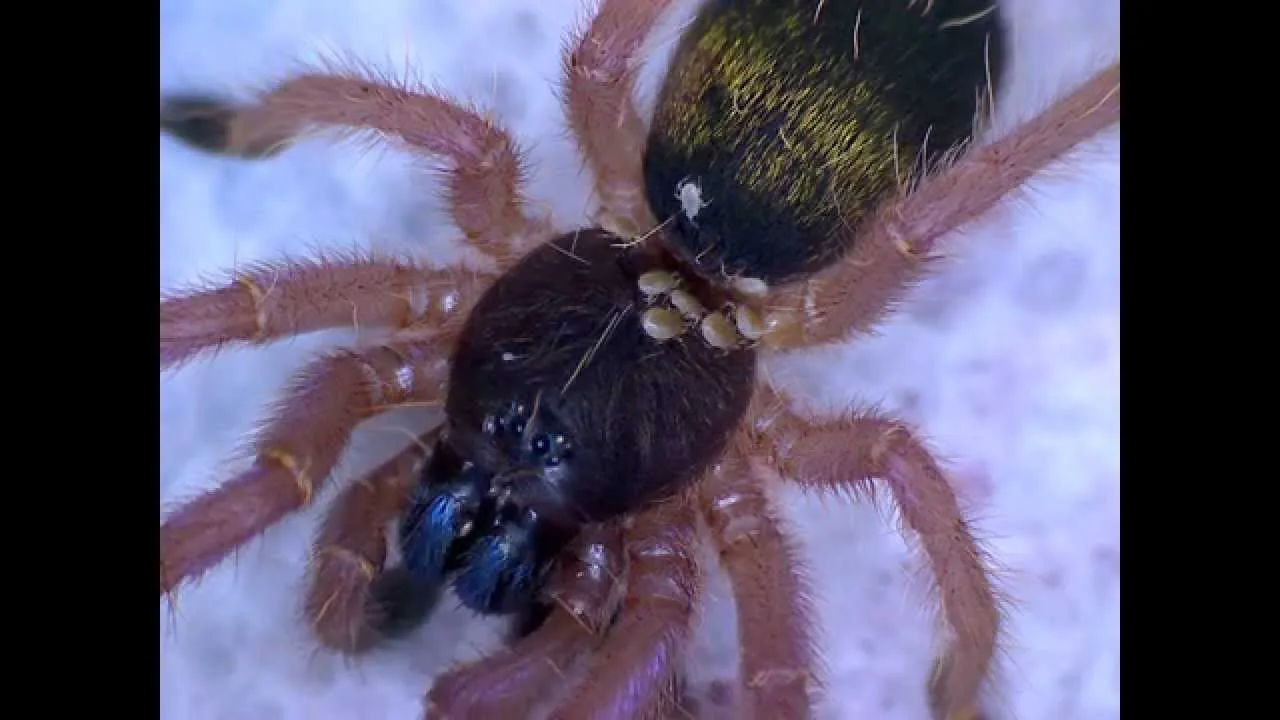
If you detect a mite infestation, several treatments are available. Horticultural oils and mite sprays can be effective when used correctly. Always follow the instructions on the product label carefully and choose treatments specifically designed for tarantulas. Before applying any treatment, remove the tarantula from its enclosure and isolate it in a temporary container. Thoroughly clean and disinfect the enclosure. After applying the treatment, allow the enclosure to dry completely before returning the tarantula. Monitor your tarantula for signs of adverse reactions to the treatment. Consult with an expert reptile veterinarian to make sure you have the right treatment for your specific situation. The quicker the treatment, the better the outcome.
